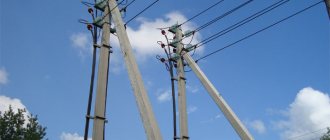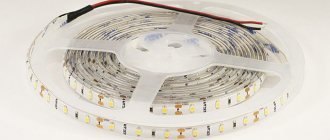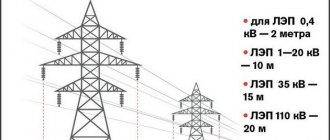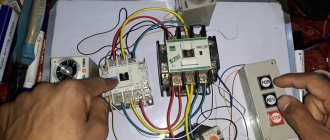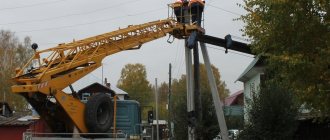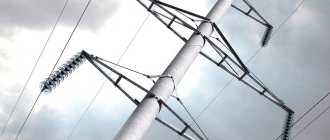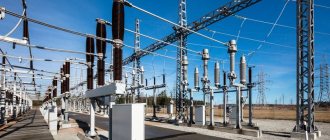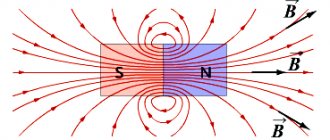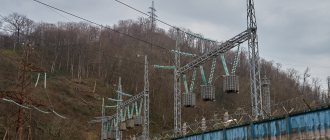The security zone of a power transmission line is a spatial limitation in the form of a geometric volumetric polygon, located on all sides of a technical structure (including in the air above it), the allocation of which is carried out in order to ensure security measures. The location of the power line can be a land or water plot, the method of laying the lines is cable or overhead, the main purpose is for communication or energy transportation.
Near the city
Much depends on the area where the structure is located, the size of the power line security zone, the voltage class of the lines, the proximity of objects for which cable or overhead lines (OL) may pose a potential threat or danger.
Security zone distances
Whatever the distance around the supports according to the law (for example, the security zone of a 10 kV power line requires 10 m on each side), the norms for distances from the supports must still be observed. The installation must perform its functions without threatening anyone’s life or health.
Near the power plant
The main document on the placement of power lines, the procedure for their installation and determining how many meters in each direction need to be retreated when creating security zones is Resolution No. 169, adopted on February 24, 2009 “On the procedure for installing security zones.”
This document is the fundamental Government Decree on the development and placement of power lines, the construction of power lines and the creation of proper boundaries - in the official zone, for which a special legal definition has been developed.
The location of switchgears and points, transformer substations according to regulations is carried out in special buildings and structures that are constantly closed. Departmental instructions provide for the procedure for access of specialists with clearance and authority, and also prohibit access by outsiders.
Diagram of sanitary zones for power lines in accordance with SanPiN standards
It is impossible to build special premises for hundreds of kilometers of overhead power lines, and they are cheaper than laying underground cables, although they remain accessible not only to those who are legally responsible for their condition and operation.
Responsibility for the correct use of power lines rests with those involved in electrical networks.
They are responsible not only for repairs and security, but also for limiting the security zone of power lines. Their responsibilities also include informing the public about the degree of danger and standards for preventing possible consequences.
Supports near the village
Security measures are as follows:
- In determining how many meters is the minimum distance from a power line to a residential building, industrial building, public or domestic building. Reducing it is prohibited by law, and a violation of the prohibition is subject to administrative sanctions under the Code of Administrative Offences.
- Allocation of a plot of land of a certain size in the security zone of a power transmission line, along a vertical plane from the wires. Approaching the earth boundary can be permitted or prohibited only if it is set depending on the number of volts in the overhead line (OHL).
- When structures with wires are located on the water surface, the determination of the permissible distance is also the minimum distance determined by the operating rules.
- When located underground or underwater, it carries out a designation that depends not only on the voltage, but also on the navigability or non-navigability of the reservoir.
- Special clearings are being cut down in forests, shelterbelts and parks. In this case, cutting down each tree carries additional measures to ensure fire safety in the power transmission line security zone and prevent environmental vandalism in the event of a fire.
Table of norms, how many meters you need to retreat in each direction
The work of organizations responsible for safe production or living in places where power lines pass includes the need to place warning signs. Each of them should be durable and bright, reaching a size of 28x21 cm, in case someone has poor eyesight.
Width along overhead, underground, over water lines
Rules for the width of zones along the infrastructure:
- security zone of high-voltage overhead power lines (all distances are measured from the outermost wires): space above the ground with parallel vertical frames spaced horizontally according to Table 1 of GOST, determined by voltage (kV);
- over bodies of water. Above-water space with parallel vertical boundaries on the sides. For navigable objects - 100 m. For non-navigable objects - according to the table. 1;
According to SanPiN 2.2.1/2.1.1.1200-03 (clause 3.3), the parameters of sanitary ruptures for overhead lines are as follows:
Gaps can be corrected based on the results of instrumental examinations, as well as if there are devices to reduce the electric field strength. Resolution N 160 clarifies the distances, in particular, prescribes the intervals for 1–20 kV:
The dimensions are determined using tables, for example, the security zones of 6 kV power lines are 10 or 5 m wide.
Human activities in the protected zone
GOST 12.1.051-90 is the main document with which distances need to be coordinated. It provides a generally accepted definition of a security zone. The list of prohibitions covers various situations in which human activity cannot be carried out.
Prohibition on work
For example, when it comes to the distance of a power transmission line from private property, the security zone of a 0.4 kV overhead line is 2 m from each wire (RF Government Decree No. 160), if we are talking about the boundaries of the site, and not about the foundation of the building. Free space around the electrical installation is necessary in order to avoid the destructive effects of the electromagnetic field.
It has long been proven that the higher the tension, the more significant the negative changes in the human body.
In populated areas there are strictly permitted concepts for security zones depending on voltage. If the security zone of the power line is 35 kV, then a retreat of 15 m is required. At the same time, no trees or bushes can be planted, and in case of violation they will be cut down without fail.
If the power line is located on private land, the owner can use the soil to grow plants. But for this you need to obtain permission from the organization responsible for operating the power line. In this area you cannot plant trees and shrubs, apply fertilizers containing chemical compounds dangerous to the structure, or even water your garden. In this case, the easement on the land property is observed.
The photo shows power line poles.
In the city
Subtleties
The security zone of a 110 kV power line is 20 m, and if over 150 kV, then 25 m. It should be noted that even agreement with the relevant authority does not give the direct owner of the site the right to restrict access for repairs. It will not be possible to prevent repairs if necessary on the grounds that it is land property and crops are grown on it.
Minimum indentation standards
The basic rule is to follow the prescribed order:
- You cannot block entrances and roads, dump garbage and snow, or keep animals;
- interfere with the work of people who need repairs and have permission to carry them out;
- no construction, dismantling, improvement or reconstruction of buildings is permitted until a permit to demolish, begin construction or carry out demolition has been issued;
- another condition is the absence of any excavation work near power lines, land reclamation or the use of explosions, even with the most urgent need to lay irrigation canals, ditches for pipes or cables.
Power Line Support Options
All these actions, in the absence of a work permit from the owner of the site (unless he removes the obstacles he himself created), may entail an administrative fine or filing a lawsuit in court. And the judicial authority always regards such actions as creating a danger or threat to the operation of a high-voltage or cable line, which is an administrative violation.
With whom and how to coordinate work
The interaction with enterprises in whose jurisdiction the communication lines are located, obtaining permits and coordinating work is reflected in detail in Resolution No. 578. For power lines, such a document is Resolution No. 160. The general rules are contained in other documents indicated by us at the beginning of the article.
In all cases, during planned line maintenance work, the owner of the site is warned in writing by the responsible enterprise.
Coordination for work in communication line areas
The parameters of areas where work and tree planting are prohibited are determined by operating organizations. The boundaries and location of communication lines are created by them and agreed upon with local government (administrations) according to previously drawn up projects.
If there are security zones on plots allocated for agriculture, vegetable gardens, orchards, a note is made in the documents for such lands about the presence of segments with a special regime. The allocation of such plots is carried out by local governments in agreement with the companies operating the lines, which also inform the owner of the plot in writing about the described feature, and also determine the compensation associated with this.
For work carried out by the owner (user) of the site, the written consent of the enterprise responsible for the lines must be obtained (R. III post. N 160). Moreover, such a document must also be obtained from special supervision and control authorities for measures to identify the location of underground communications.
A developer intending to work in the zone no later than 3 days in advance. (working days) before the start of the event, he is obliged to call the responsible employee of the service company to accurately determine the location of the cables. Based on the results of the analysis, a report is drawn up. The line is marked with poles and signs. Workers are familiarized with the hazard data and the information received. Developers notify the responsible company about the start of activities no later than 3 days in advance. Work is prohibited until a representative arrives at the site.
The enterprise is obliged to compensate land owners for losses associated with the maintenance of communication lines and power lines.
Coordination of work in security zones of power lines
To approve work in the security zone of an overhead line or another type (underground, underwater), interested parties submit an application to the network organization no later than 15 working days. days The latter is obliged to consider the application within two days and make a decision on approval. The application must be accompanied by a project, technical documentation (mandatory for blasting activities) and a description of the work.
Rules for staying in the security zone of power lines
The length, width and height of the security zone of power lines, depending on the voltage in the line, are designed in such a way that their compliance ensures maximum safety for people. That is why power lines should not be located in a recreational area, and in navigable bodies of water a protective zone is created of such a significant size.
Evening in the city
The parameter required to be taken into account was determined on the basis of scientific research. How much to retreat from a recreational area or from a residential building is determined by considerations of the safety of others.
It depends on the person how dangerous the impact of the electromagnetic field of a power line can be for him. He should not stay in the power transmission line security zone for a long time, no matter what his needs are there. It was not by chance that this territory was identified. Therefore, it is better not to approach from either side unless it is related to production activities.
The photo below shows power transmission poles.
In the forest
Primary requirements
Security zones are installed near overhead, underground, underwater and water-crossing substations. For safety, special rules have been developed that outline the requirements for behavior in areas of power lines isolated from external influences.
At the power plant
For any building, be it a school or a retail outlet, a car wash, an entertainment center in the Chekhov district or the village of Donino, distances and rules of behavior depend on the voltage transmitted through the power line.
Near the power line area, you must not place flammable objects, throw anything onto the wires, or carry out work that causes technical or chemical damage.
Since it is impossible to place a guard near every pole, a warning picture must be placed on the pole, which has an official sample.
Its appearance will not cause any burden on wires and communications, but people will know about the size of the zone and voltage, for example, VL-10. In this way, it is possible to reduce the degree of danger both in Ramenskoye near Moscow and 10,000 km away, in some SNT or in the Tyumen region.
Power line pole
You can reduce the distance to overhead lines by 4–6–10 meters using a self-supporting wire (2.5.104) or burying it in the ground. But high voltage levels (500 and 1000 kW) require special care. Such high-voltage lines cannot be located in close proximity to residential buildings and public buildings.


